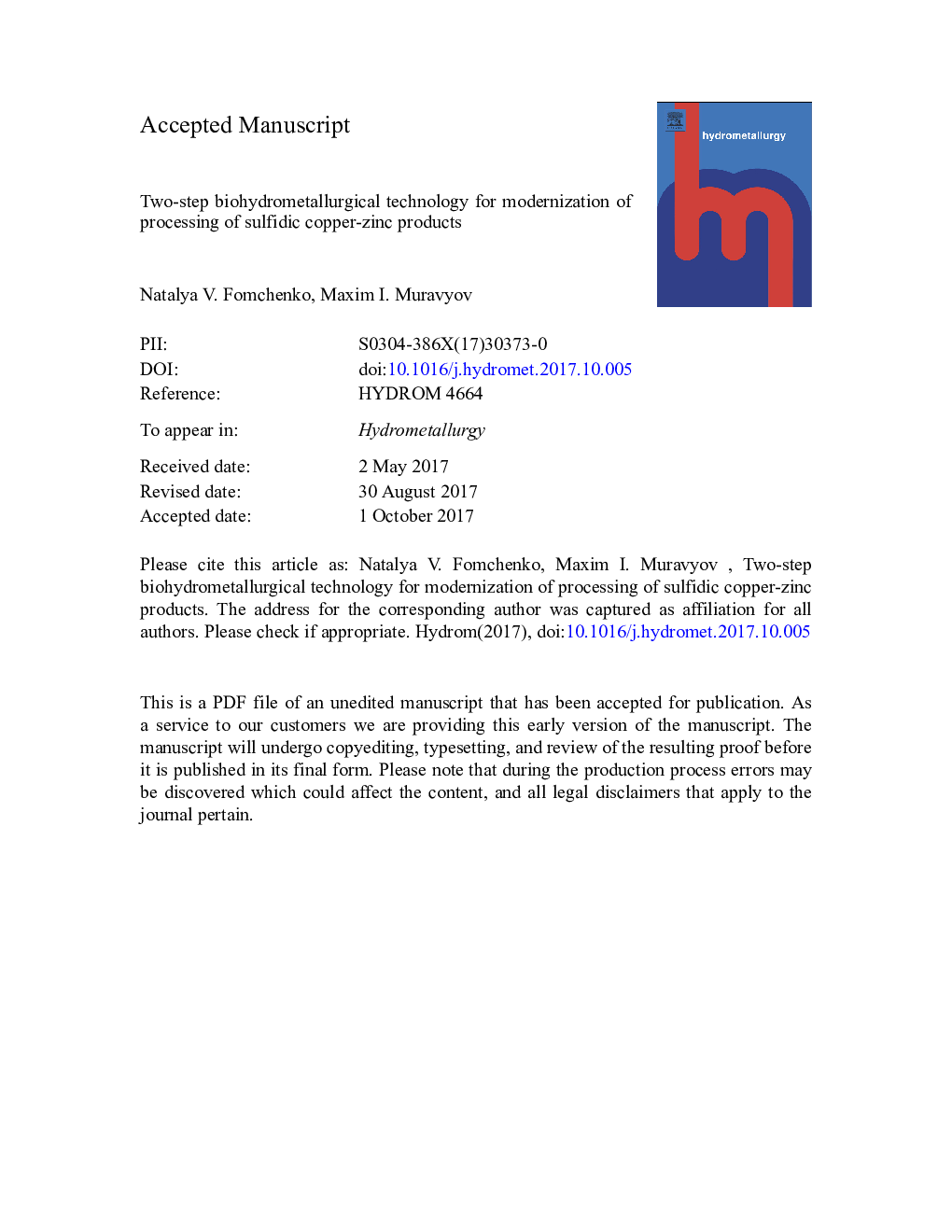| Article ID | Journal | Published Year | Pages | File Type |
|---|---|---|---|---|
| 4769243 | Hydrometallurgy | 2017 | 27 Pages |
Abstract
A process of the high temperature ferric leaching of the copper-zinc concentrate and pyrite product during a two-step biohydrometallurgical technology was studied. It was shown that the use of the galvanic effect during the leaching of the copper-zinc concentrate enabled to obtain a copper concentrate with low zinc content in the relatively short time (approximately 5.7Â h), while zinc concentration in the liquid phase was sufficient for zinc and copper recovery by extraction and cementation, respectively. Zinc content in the concentrate decreased from 7.36 to 0.5% in the process of leaching. The recovery of zinc and copper into the liquid phase was 96.1 and 40.3%, respectively. The leaching of copper-zinc pyrite product and galvanic interactions of minerals made it possible to recover nonferrous metals from it almost completely and to leave the main amount of sulfur and iron in leach residues. Operation of the laboratory unit with the use of bioregeneration of the liquid phase showed the principal possibility of functioning of a two-step biohydrometallurgical technology under semi-continuous conditions with the closed cycle of technological flows. Zinc content decreased from 15.25 to 1.3% during the first step of the leaching process, whereas during the second (biological) step it declined to 1.03% (within 24Â h). The recovery of zinc and copper into the liquid phase was 92.6 and 54.6%, respectively. Flow sheet of the copper-zinc concentrate treatment, which can serve as a basis for modernization of the treatment of sulfidic raw materials, is proposed.
Keywords
Related Topics
Physical Sciences and Engineering
Chemical Engineering
Chemical Engineering (General)
Authors
Natalya V. Fomchenko, Maxim I. Muravyov,
